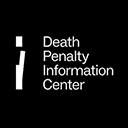Indiana’s seemingly paradoxical resumption of executions, with three over the last year, is drawing scrutiny from many corners of the state. Governor Mike Braun, legislators from both political parties, public defenders and even prosecutors have raised questions about the costs of prosecuting capital cases and obtaining drugs for executions; the failure of capital punishment to deter crime; and the increasing reluctance of Indiana juries to sentence defendants to death in the rare cases in which death sentences are sought.
Many of my colleagues continue to come to my desk and stop by my office to continue to have a discussion of ending capital punishment.
With five individuals under sentences of death, all of whom were all sentenced prior to 2013, Indiana has the fifth smallest death row population in the country. Capital prosecutions remain rare. According to reporting by the Indiana Capital Chronicle, “local jurisdictions are increasingly weighing when [capital] charges are best pursued compared to life-without-parole sentences, especially given the legal costs and the length of appeals.” State data researched by the Chronicle indicates that there have been no more than three capital cases filed in any of the past five years, a sharp drop from the 1990s “when multiple capital prosecutions often ran simultaneously[.]” No death sentences were sought in 2025, and only one was sought in 2024, two in 2022 and 2023 respectively, and three in 2021. None of these cases resulted in a death sentence.
Indiana also has a high rate of resentencing for death-sentenced individuals. More than 70% of those sentenced to death in Indiana in the modern death penalty (105) era have been resentenced to life in prison or less (70). Two death-sentenced individuals in Indiana have been exonerated.
Executions are rare in states with similarly small death rows like Indiana’s. Montana, with two individuals on death row, has not executed anyone in almost 20 years. New Hampshire, which abolished the death penalty in 2019, still has one individual on death row, but has not executed anyone in the modern death penalty era (post- Furman). Utah, with six individuals on death row, carried out its first execution in almost 15 years in 2024.
Similar to Utah, Indiana’s recent string of executions follows a long (fourteen-year) pause. Two executions in one year is unusual for the state. In the last 45 years, Indiana executed 23 individuals — and in only two years (2005 and 2025) — was more than one execution carried out in the same year. Joseph Corcoran was executed in December 2024. Mr. Corcoran waived his appeals and “volunteered” for execution despite three separate psychologists diagnosing him with paranoid schizophrenia. Benjamin Ritchie was executed on May 20, 2025, and experienced what many believe was a botched execution. Roy Lee Ward was executed on October 10, 2025. No execution dates have been set for any of five remaining men on the state’s death row.
Whether one supports or opposes capital punishment, the financial reality involves choosing between funding executions or investing those same public resources in targeted crime prevention and deterrence programs.
The cost of executions has sparked debate in the state. Gov. Braun disclosed the state spent $1.175 million on drug supplies over the past two years. The chair of Indiana’s Prosecuting Attorney Council’s Complex Litigation Committee, Jeremy Mull, reminds that execution costs are only part of the overall cost of prosecuting capital cases: “These cases can run into the millions of dollars over time.”
Several state studies support this view. A 2010 review by the nonpartisan Legislative Services Agency found that a death penalty case in Indiana costs five times more than a case seeking to impose life without parole. A more recent analysis by the Agency, compiled in response to House Bill 1030, introduced in January 2025, found that capital cases cost the state on average eight times more than life without parole cases ($290,022 versus $36,173). The author of HB 1030, Republican Caucus Member Robert Morris, argues that the high costs of capital cases is cause to abolish the death penalty in the state. Rep. Morris has also been outspoken about the failure of the death penalty to deter crime: “The reality is, executions don’t stop these heinous crimes.” The legislation has attracted bipartisan support.
I believe that this legislation strikes a balance wherein the person’s death sentence is commuted to a sentence of life imprisonment without parole… Furthermore, it safeguards the risk of the potential execution of innocent people and prevents the collective trauma that is experienced by all people involved in an execution helping to ensure a morally well society.
Casey Smith, “Indiana’s death row dwindles to five — and future executions remain uncertain”, Indiana Capital Chronicle, October 20, 2025; Casey Smith, “Braun clarifies Indiana acquisition of execution drugs; reveals more than $1M spent”, Indiana Capital Chronicle, June 24, 2025; Casey Smith, “‘A hell of a lot less expensive’ than lethal injection: Could Indiana approve firing squads?”, Indiana Capital Chronicle, July 18, 2025; Casey Smith, “Braun considers releasing execution drug costs as lawmakers rally behind anti-death penalty bill”, Indiana Capital Chronicle, February 3, 2025; Tim Spears, “Indiana isn’t keeping track of capital punishment costs”, WISH-TV: Indiana News, June 18, 2025

